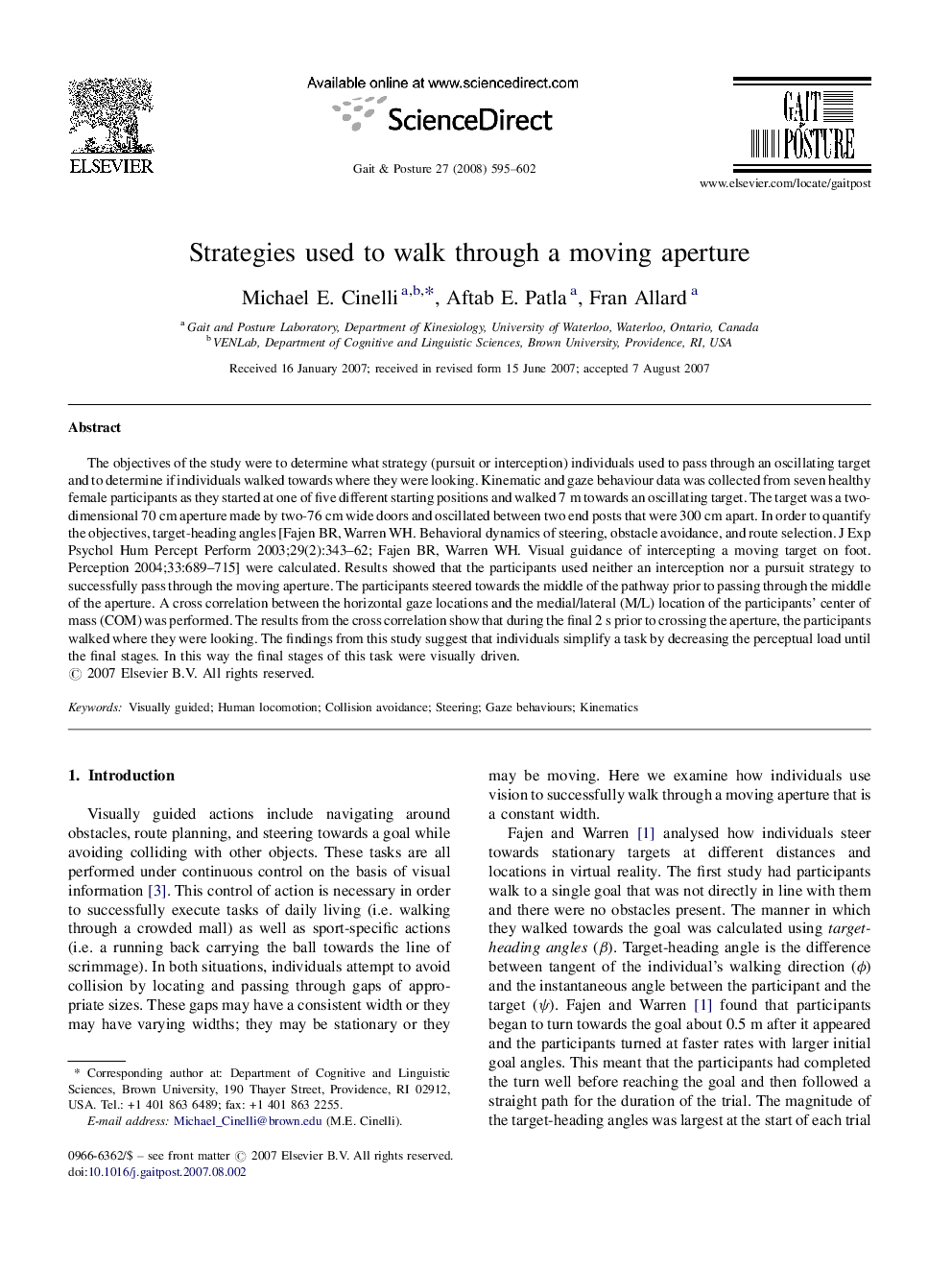| Article ID | Journal | Published Year | Pages | File Type |
|---|---|---|---|---|
| 4057996 | Gait & Posture | 2008 | 8 Pages |
Abstract
The objectives of the study were to determine what strategy (pursuit or interception) individuals used to pass through an oscillating target and to determine if individuals walked towards where they were looking. Kinematic and gaze behaviour data was collected from seven healthy female participants as they started at one of five different starting positions and walked 7Â m towards an oscillating target. The target was a two-dimensional 70Â cm aperture made by two-76Â cm wide doors and oscillated between two end posts that were 300Â cm apart. In order to quantify the objectives, target-heading angles [Fajen BR, Warren WH. Behavioral dynamics of steering, obstacle avoidance, and route selection. J Exp Psychol Hum Percept Perform 2003;29(2):343-62; Fajen BR, Warren WH. Visual guidance of intercepting a moving target on foot. Perception 2004;33:689-715] were calculated. Results showed that the participants used neither an interception nor a pursuit strategy to successfully pass through the moving aperture. The participants steered towards the middle of the pathway prior to passing through the middle of the aperture. A cross correlation between the horizontal gaze locations and the medial/lateral (M/L) location of the participants' center of mass (COM) was performed. The results from the cross correlation show that during the final 2Â s prior to crossing the aperture, the participants walked where they were looking. The findings from this study suggest that individuals simplify a task by decreasing the perceptual load until the final stages. In this way the final stages of this task were visually driven.
Related Topics
Health Sciences
Medicine and Dentistry
Orthopedics, Sports Medicine and Rehabilitation
Authors
Michael E. Cinelli, Aftab E. Patla, Fran Allard,
